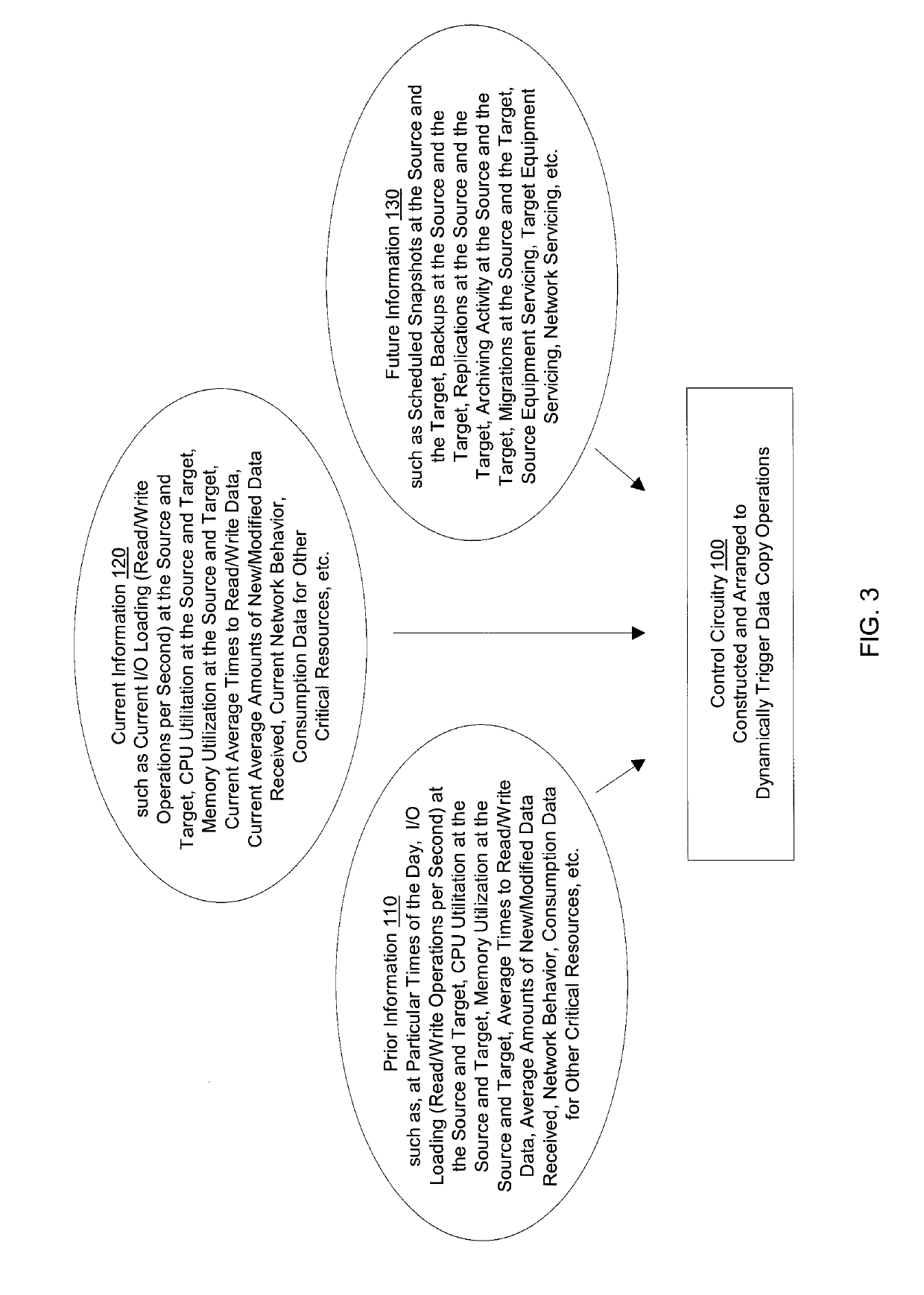Adaptively controlling data copy operations that copy data in an electronic environment
- Summary
- Abstract
- Description
- Claims
- Application Information
AI Technical Summary
Benefits of technology
Problems solved by technology
Method used
Image
Examples
example 1 (
Dynamic Adjustment Based on Analysis of Collected Statistics)
[0046]In a first example situation, suppose that a SLA dictates that the data storage location 32(1) must complete data copy operations to the data storage location 32(2) every 10 minutes as part of an asynchronous replication process (i.e., periodically, changed host data at the replication source is temporarily queued and then copied to the replication target). Additionally, suppose that, under regular operating conditions, the data storage system 24 has determined that issuing a data copy trigger every 9.5 minutes is sufficient to effectuate proper copying of new and modified host data from the data storage location 32(1) to the data storage location 32(2) in satisfaction of the SLA.
[0047]However, suppose that the prior performance statistics now indicate that the load on the destination data storage location 32(2) routinely increases on weekdays between 9 AM and 11 AM so that write operations by the data storage locati...
example 2 (
Dynamic Adjustment Based on Current Measurements)
[0049]In a second example situation, suppose that the SLA again dictates that the data storage location 32(1) must complete data copy operations to the data storage location 32(2) every 10 minutes as part of a replication process. During the last few days, the data storage location 32(1) has had to initiate data copy triggers two minutes earlier than usual (e.g., at eight minute intervals) due to limited bandwidth in the communications medium 26 that connects the data storage location 32(1) to the data storage location 32(2) (e.g., due to atypical delays caused by network servicing).
[0050]However, now suppose that current measurements of network bandwidth between the data storage location 32(1) and the data storage location 32(2) indicate that the performance of the communications medium 26 has returned to normal. In response to such a determination (or perhaps after confirming that the situation has returned to normal after a predefi...
example 3 (
Dynamic Adjustment Based on Scheduled Events)
[0052]In a third example situation, suppose that a SLA dictates that the data storage location 32(1) must complete data copy operations to the data storage location 32(2) every 10 minutes as part of a replication process. Additionally, under regular operating conditions, the data storage system 24 has determined that issuing a data copy trigger every 9.75 minutes is sufficient to effectuate proper copying of new and modified host data from the source data storage location 32(1) to the destination data storage location 32(2) in satisfaction of the SLA.
[0053]However, suppose that a calendaring tool indicates that a full backup is scheduled to begin at 2 AM and that historically such operation has impacted performance of the data storage location 32(1). To guarantee compliance with the SLA during this timeframe (e.g., starting at 2 AM and until the full backup has been completed), issuing a data copy trigger every 9.75 minutes may not be suf...
PUM
 Login to View More
Login to View More Abstract
Description
Claims
Application Information
 Login to View More
Login to View More - R&D
- Intellectual Property
- Life Sciences
- Materials
- Tech Scout
- Unparalleled Data Quality
- Higher Quality Content
- 60% Fewer Hallucinations
Browse by: Latest US Patents, China's latest patents, Technical Efficacy Thesaurus, Application Domain, Technology Topic, Popular Technical Reports.
© 2025 PatSnap. All rights reserved.Legal|Privacy policy|Modern Slavery Act Transparency Statement|Sitemap|About US| Contact US: help@patsnap.com



